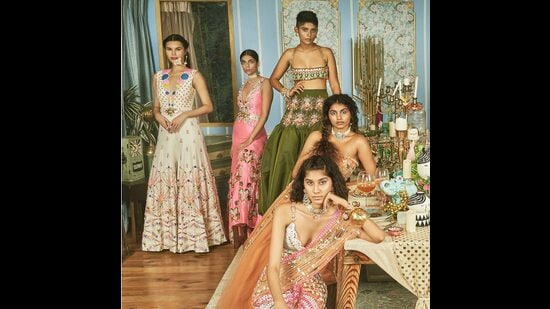Changing fashion landscape one show at a time
Recently, at Paris Couture Fashion Week, the Italian brand, Valentino, strutted down its models of varying age, size, and ethnicity, on the ramp to give the message of inclusivity and diversity loud and clear. Celebrated across the world, Pierpaolo Piccioli, the creative director of Valentino, was hailed for his revolutionary showcase. Closer home, we asked some of the designers how the Indian fashion industry can become more inclusive, and their recent contribution to the cause. Read on.

“Inclusivity exists in two folds in the Indian fashion industry. On one hand, behind the scenes, it has always been inclusive with queerness being celebrated in a big way. On the other hand, what was portrayed in front of the camera was not inclusive especially in terms of size, because the brands were essentially sticking to the standards of what will sell commercially, which was fair skin, tall height, and sample size body. However, that is changing now,” says designer Shubhika Davda, founder of the brand Papa Don’t Preach. She added saying, “We as a brand completely broke away from that when we did our ‘Zsa Zsa Zsu’ campaign last year. It was launched as India’s truly inclusive cast where we showcased a real-life women and a queer couple. There were 8 models in total, some identified themselves as pansexual, some as queer, and some as transexual. We’ve also dropped womenswear label from our tagline; now we’re just a luxury wear label where everybody is welcome.”

Designer Gaurav Gupta believes that the Indian fashion industry is becoming more and more inclusive with coming days. “There are different sized influencers, who are really good fashion influencers too. At our Lakme Fashion Week grand finale recently, we had two plus-sized models, one short model, and one non-binary model. It’s not even about tokenizing but inclusivity has become a part of the mainstream fashion culture; today it is not only accepted but celebrated, “ he says adding, “We were one of the first couture brands in 2020 (at the first digital couture week) to showcase inclusivity through different body types, sexuality, gender, skin types, and height, in our movie called ‘Name is Love’. And, we continue to do so through our various campaigns, recent being ‘Universal Love’.”
On the other hand, designer Manish Malhotra, feels that Inclusivity is not just limited to size, gender, or colour alone, but that the word goes beyond any metrics. “Fashion needs to be an accurate representation of oneself. It’s fundamental to dispel stereotypes not just online but offline too,” he says. Talking about how he tried incorporating inclusivity into his work, he says, “I consciously design to launch collections that adapt to all body shapes, constructs, and sizes. The above should not just be reflected on marketing campaigns but in stores as well. We make clothes that are more modular, transformable, gender fluid, ones where we can ditch buttons for the disabled, more conscious, and the one that caters to the special needs with customization.”
For all the latest Entertainment News Click Here
For the latest news and updates, follow us on Google News.
